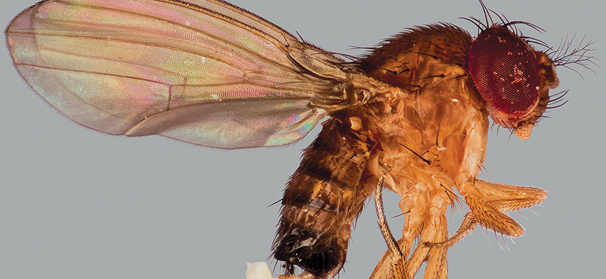

Jan 15, 2015Should vegetable growers worry about SWD, BMSB?
The dangers posed to fruit crops by invasive pests spotted wing drosophila (SWD) and brown marmorated stink bug (BMSB) are pretty well known by now, but less well known are the dangers posed to vegetable crops. Should growers of tomatoes, peppers, sweet corn and other crops be concerned?
Zsofia Szendrei, an entomologist and assistant professor with Michigan State University (MSU), discussed SWD, BMSB and their effects on vegetables during the Great Lakes Fruit, Vegetable & Farm Market EXPO in Grand Rapids, Michigan.
SWD
With help from other MSU personnel, Szendrei has been monitoring for SWD in tomato fields across the state for the last few years. She’s found SWD bugs in pretty much every tomato field in which she has placed traps, but when she takes the fruit back to the lab and tries to locate SWD inside, she never finds them. Apparently they’re in the fields and are attracted to the traps, but they’re not attacking the tomatoes. No one is sure why, but it might have something to do with the thickness of the tomatoes’ skin, she said.
“We’ve never heard a report, even in high tunnels, of tomatoes that have been attacked with this insect,” she said.
Still, she urged growers in the audience to contact her if they think they’ve found SWD in their tomatoes. Her diagnostic lab at MSU can take a closer look.
An adult SWD bug is about the size of a fruit fly. Male SWD have two black spots on the tips of their wings. Females have an ovipositor – an organ they basically use as a sawblade to open healthy fruit and lay eggs inside. Native fruit flies don’t possess such an organ. Natives have to look for a spot on the fruit that’s already soft and rotting before placing their eggs, whereas SWD females have a more “sophisticated weapon” that can penetrate green fruit, Szendrei said.
After the female SWD saws open the healthy fruit and lays her eggs inside, it takes two to three days for the eggs to hatch and turn into maggots. If you use a magnifying glass, you can see tiny maggots swimming around in the soupy mush that used to be the fruit – not something people want to eat, she said.
BMSB
In the case of BMSB, the news is worse for vegetable growers. The invasive pest – which first showed up in the mid-Atlantic region, where it has done the most damage – is just starting to appear on Michigan farms. The numbers are still low but rising from year to year. It’s the forefront of an invasion, Szendrei said.
BMSB is a nuisance pest before it’s an ag pest. It typically shows up on (or inside) houses, looking for a place to overwinter. As it becomes a problem in agriculture, it typically shows up in apple and peach orchards first. BMSB’s effects might not look like much initially, but damage to the tissue becomes apparent when the fruit is opened up. BMSB injects saliva into the fruit as it feeds; the saliva digests the fruit tissue, which rots and turns into a spongy, inedible mess, she said.
BMSB can be devastating for sweet corn growers. The insect will go down the length of the ear, stabbing its mouth parts through the husk to get to the kernels and sucking the juices out. Inside tomatoes, BMSB damage consists of a brown, spongy area underneath the skin, she said.
BMSB infestations have the potential to destroy entire crops – and there’s not much stopping it right now. Part of the reason the invader can build up such “astoundingly large” numbers in North America is that it has no natural enemies or controls. Food isn’t really a limitation for BMSB, either, because it can eat just about anything. It will even stab through the bark of trees and feed on their sap. Farms with lots of trees nearby can have higher populations of BMSB. They overwinter underneath the bark and invade fields from there, Szendrei said.
MSU personnel have placed sentinel masses of BMSB eggs in apple orchards and tomato fields to see if any native predators or parasitoids would eat them. There are indications of predation in apple orchards, but nothing is eating BMSB eggs in tomato fields right now, she said.
As for BMSB’s distinguishing features, it has white bands on its antennae, which are relatively easy to spot; it also has alternating black and white bands (with a little red mixed in) along its abdomen. It’s important to identify BMSB properly, because some native stink bugs – which don’t have the same kind of banding – are beneficial insects, and you don’t want to go around killing beneficials, she said.
Despite its advantages, researchers have found ways to at least manage BMSB, including the use of traps and insecticides. For more information on management strategies, click here.














